“If at first you don’t succeed, redefine success.”
This caption for a New Yorker cartoon nails the “FOMO” mentality of a “workout of the day.”
Then why, might you ask, is StrongFirst jumping on the bandwagon and introducing its own “WOD”?
Please read on.
The biological law of accommodation states that the response of an organism to a given stimulus decreases over time. In other words, the longer you repeat an exercise, the less effective it gets. Therefore, training must be varied.
On the other hand, the law of specific adaptations to imposed demands decrees that, in order to get good at an exercise, you must practice that exercise.
So effective training must be different and same! A puzzle for a Zen master. According to Prof. Vladimir Zatsiorsky, the conflict between the need for specificity and variability is one of the main problems in elite athletic training.
The answer comes from the chaos theory. Renown scientist and medical doctor Prof. Stuart Kauffman explains: “…on many fronts, life evolves toward a regime that is poised between order and chaos. The evocative phrase that points to this working hypothesis is this: life exists at the edge of chaos… Networks in the regime near the edge of chaos—this compromise between order and surprise—appear best able to coordinate complex activities and best able to evolve as well.”
A “WOD” throws the organism into a state of total chaos, a randomness in which any gains are purely accidental. The other extreme, rigidly doing exactly the same thing day in and day out does not get the body’s attention and fails to elicit any reaction.
Professional coaches balance “on the edge of chaos” with two tools: waving the loads and specialized variety. The former manipulates the quantity of the training load and the latter its quality.
Waving the loads, the brainchild of Prof. Arkady Vorobyev, refers to aggressively—as opposed to progressively—changing the weights, sets, reps, etc. A forerunner of this tactic may have been a 1920s Soviet study in which rabbit blood vessels did not react to particular doses of certain chemicals—but reacted to an increase or a decrease of the dose.
In a classic series of 8-10 weeks experiments on weightlifters members of Vorobyev’s research team compared the effects of traditional baby step progressive overload and whiplash variability. In the latter the daily and weekly volume jumped up and down by a minimum of 20% and often more. When it was all said and done, the experimental groups made strength gains 61% greater than the control groups. A welcome bonus, athletes in the experimental groups were healthier and felt better.
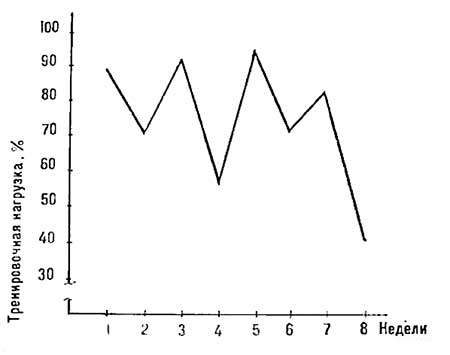
(Ermakov, 1974).
100% is an athlete’s “maximal volume.”
“Waving the loads” is integral to all StrongFirst programming.
In its simplest version, Kettlebell Simple & Sinister sweeps away the perceived need to have a whole park of kettlebells going up in small increments and takes bold weight jumps when the trainee is ready for them.
At its most sophisticated, Plan Strong™ Custom Designed Strength Plans apply the system that earned gold for the Soviet National Weightlifting Team to the powerlifts, the kettlebell and barbell military presses, and even weighted bodyweight exercises.
Soviet weightlifters and Russian powerlifters have proven that one can stay with the same lifts for years and even decades and keep making progress, as long as the sets, reps, and weights are varied intelligently. The body keeps reacting to the same “medicine,” as long as the dose keeps changing.
Readers familiar with Soviet weightlifting methods might argue that Prof. Alexey Medvedev’s classic textbook listed 100 special assistance exercises for the snatch and the clean-and-jerk.
True. Here are a few from the snatch list:
14. Power snatch from the platform followed by an overhead squat
…
20. Snatch pull off a deficit
…
24. Snatch pull from the platform, slow up and slow down
This “variety” reminds of a humorous coffee table book about Scandinavians. The author (a Scandinavian) earnestly states that people from various Nordic countries are very different from each other. He illustrates his commentaries about each country with photos of the same guy wearing sweaters of the same brand with different patterns.
You will not see curls or burpees on Medvedev’s list. His variety is anything but random. This is specialized variety—a second tool for balancing “on the edge of chaos.”
Radically different from what Rif derisively calls the “random acts of variety” popular with the “FOMO” crowd, specialized variety (SV) exercises are “same but different.” They are subtle variations of the same lift.
For instance, in Kettlebell Simple & Sinister the two-arm swing acts as SV for the one-arm swing and a half get-up as SV for the get-up.
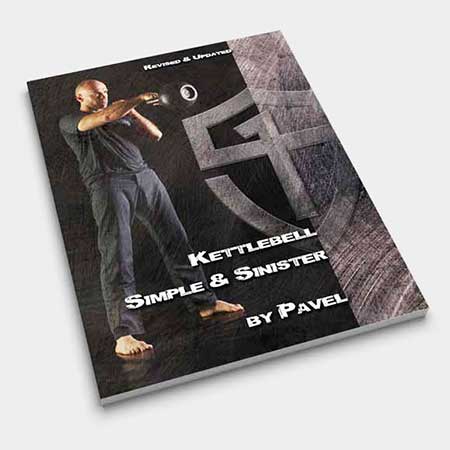
A barbell example is bench pressing with different grips. In contrast, parallel bar dips do not qualify as SV because they have a totally different groove. It does not mean that dips would not improve your bench press—they might—but it is a gamble. With specialized variety, such as benching with chains attached to the bar, it is a near certainty.
A bodyweight example is doing pullups with a variety of grips (narrow, medium, wide; over, under, parallel, staggered; thumbs wrapped, thumbs over, false; uneven), timing (explosive, slow, with a 3sec pause on the top of each rep, etc.), equipment (a straight bar, parallel bars, rings, towels), and the placement and the nature of added resistance (kettlebells on the feet, a weight belt, a weight vest; bands; chains; artificial controlling environment). In contrast, rows do not constitute SV for pullups. They might help but I would not put my money on it.
Variety is overrated. Amateurs have been brainwashed by the pop fitness industry that they need to constantly change exercises to keep making progress. In contrast, the pros in the iron sports—powerlifting, Olympic weightlifting, kettlebell lifting—keep plugging away at the same handful of key lifts year after year and keep getting stronger. Russian coaches call this the principle of continuity of the training process.
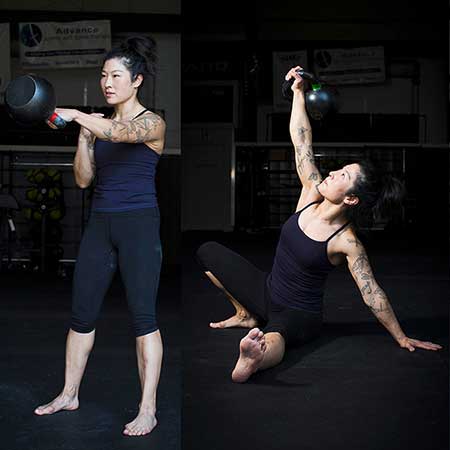
Masters US Weightlifting Nationals Gold Medalist
Choose two to three lifts or exercises that you desire to excel at. For instance:
- Kettlebell swing + kettlebell get-up (e.g., the Sinister Challenge)
- Deadlift + barbell military press
- Weighted pullup (eventually one-arm pullup) + handstand pushup (progressively more difficult variations)
- Weighted tactical pullup + kettlebell military press + weighted pistol (the Iron Maiden/Beast Tamer Challenge)
- The three powerlifts
- The “push-pull” (deadlift + bench press)
- The barbell Olympic lifts
- Kettlebell snatch + kettlebell military press
- Tactical Strength Challenge: deadlift + tactical pullup + kettlebell snatch
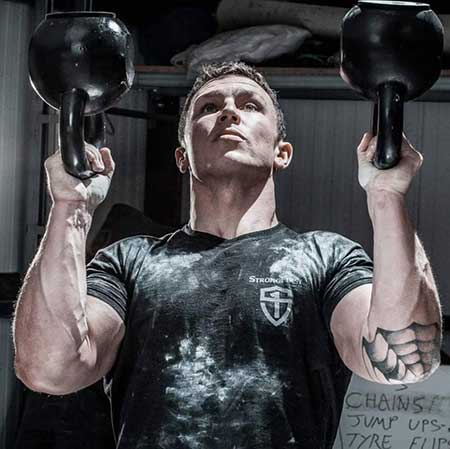
Dedicate years to master the technique of your chosen lifts. Purposefully train these moves instead of mindlessly “working out.” Stay “on the edge of chaos”—but never fall off the edge into the total chaos that describes the mainstream fitness.
Ladies and gentlemen, we are proud to introduce the StrongFirst WOD: the “workout of the decade.”
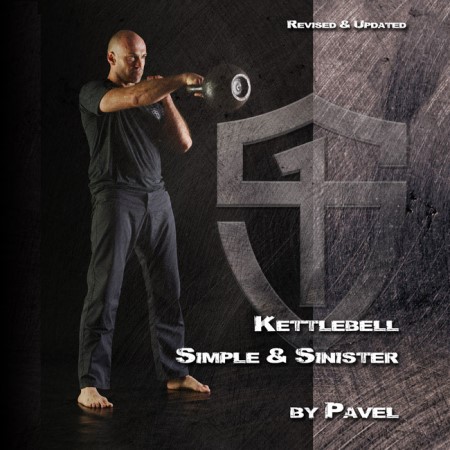
the “Workout of the Decade.”
# # #
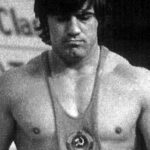

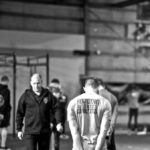


Hi Pavel
Thanks for being a voice of reason in the world of “abs” and “bicep curls”
when you say one armed pullup do you mean what the sissys call a “chinup” (palms facing inward) or a ‘pullup “(palms facing the bar)?
Thank you so much for S&S! Not including some time utilizing RoP, S&S has been my WOD for about 18 months!
I am in the midst of an 8 week block of owning S&S at 32kg (currently week 2). I am practicing 6 days a week, alternating 1 and 2 handed swings. I have been doing get ups as directed.
I saw you advocated a 1/2 get up as SV for get ups. Is a 1/2 get up to the knee? Do I use them on the same day as the 2 handed swing?
When I start integrating the 40kg on the 4 day schedule, do I use any 2 handed swings or 1/2 get ups? If so, with what frequency? Can I supplement my 4 days with them?
Hi Pavel, I do like a lot the minimalistic approach. I feel that S&S is a very beneficial program for me. I can swing 1 arm easily with the 40 and start doing the 48. Hard but it will come.
The getup are quite of a different story. Everything feels managable but the roll to elbow feels hard on the left side. I am currently stuck at 32.
I am currently training 4 times per week.
I have the feeling that adding some military press and floor press will help the roll to elbow. Any suggestion?
Hi, Chief.
Using S&S a couple times a week (mon/thurs) as strength backbone for my running (tue/wed/fri/sat). Generally speaking, anything I should try to do with that? Pretty much Maffetone-ing everything on run days, and going by feel on S&S.
Great article, Thank you for writing this!
Hello Pavel,first time commenting here after following Strongfirst for half a year now.
My WOD(workout of the dacade) would encompass the lifts both contested on the beast tamer and tactical strength challenge. Making you an extremely well rounded athlete, having absolute strength from the deadlift, unilateral strength both from the military press and pistol squat, relative strength and excellent body comp from the weighted and bodyweight pullups and high level endurance from the snatches.
Monday
Military press
Weighted pullup
Weighted Pistol
Tuesday
A+A snatches
Thursday
Military press
Weighted pullup
Deadlift
Saturday
A+A snatches
All lifts are done using all the tension techniques and methods from Strongfirst ,waving the loads, sets and reps on the programming and using specialized variety when needed to assist the main lifts.
I would call it the Tactical Tamer Template.
Rodrigo, consider adding a second, light, pistol day. Otherwise, looks good.
Thanks a lot Pavel,the light pistols could be done in a GTG style using bodyweight for example maybe?
Ladies and gents, I just realized that I was not the one to come up with the “Workout of the Decade”; it was Harald Motz:
https://www.strongfirst.com/community/threads/thoughts-on-simple-and-sinister.4528/
Harald, my apologies for forgetting.
Hi Pavel,
Can Confirm!! After years on the road and little progress in my log book I’d been frustrated. Read through Easy Strength along with ETK, QD and others and decided that for what I do, the beast tamer trio is well suited. Fast forward a year and behold, I’m 20% stronger on all 3 lifts and my kung fu buddies are frustrated. I’ll apologize for straying from your strict advice here, I’ve added swings for a total of four exercises.
Your analysis and perspective provided through Strongfirst and your publications have been the antidote to the “information” overload coming from much of the industry. For the first time I don’t feel like I’m missing something and can relax about my program and focus on the actual training and it is incredibly relieving. Thank you.
If you have time for a question, here it is: I’ve considered adding in the power lifts for “systemic load” or to emphasize total strength since everything I’m doing now is unilateral (not pullups). I’m wondering your thoughts on minimum effective dose or whether I should even worry about this.
Well done, Pat! You could use front squats and barbell military presses as SV. There is no easy fit for the DL.
Good article! Any suggestions on when an injury may force you to vary exercises? I was very diligent for 6 months on S&S and followed the 2.0 recommendations, after 6 months I develop tendonitis in left elbow and couldn’t do one arm swings and barely 2 arm swings with lighter weight. Should I just switch to something else?
Thomas, the answer depends on the injury’s causes and background.
Get it checked out by a doc. Once you are cleared to train, have an SFG instructor review your technique. E.g., you might be not fully extending the elbows on the bottom of the swings.
Power and health to you!
Such a fascinating article! Interestingly, I stopped doing bodyweight lifting this past summer in order to progress with kettlebells (wanting the SFG 1 license). I ended up naturally “feeling” the need to focus on doing related kettlebell exercises with some kind of crossover effect instead of doing bodyweight exercises which seemed to have no such crossover effect. I am very happy about my decision. The snatches and presses are improving my S&S swings and getups, and of course the S&S moves for several years helped me to start seriously training the snatches and presses. Because of this article, I will with full confidence continue to practice all four of these moves, apparently with “party blessings”, if I’m understanding this all correctly (I think I am!)
Awesome!!!
Kozushi, you got it: “naturally “feeling” the need to focus on doing related kettlebell exercises with some kind of crossover effect.”
Bon chance avec la stage SFG I; de la puissance!
Excellent article.
Been on a clean and press only routine for 3 weeks now. Have more time and energy to put toward martial arts.
Feel tighter yet looser, stronger, more springy. At 51, haven’t felt this good since my 20’s.
Pavel, you are truly brilliant. Thank you for existing.
Thank you for your kind words, Pete!
Thanks for the reminder to very the reps or exercise,
have gone from timed to slowing rep to mixing long set to Goerner reps, never gets old with me at over 60 now
Thank you, James! Stay young.
Hi Pavel,
The lockdown led me to your S&S book. Many thanks for the lessons contained in it! Really appreciated the simplicity of the program! So much so, that I’d like to ask you the following question.
Can someone who has reached the simple goal (no desired to go for the sinister) can do the program *indefinitely* to keep his strength and conditioning levels? Or should something be added/changed?
Jorge, I do not see any reason why not.
You didn’t ask me, but I’ve been doing it ‘indefinitely’ for 4 years. The longer I do it the more confident I feel as a “strong man”. It made me strong, it keeps me strong, it will ensure I stay strong. There are few things as pleasant as living my life with this kind of confidence in my pocket.
Simple, brilliant, and inspiring as usual.
I did half of my wod : Five years of s&s, starting with 16/20 kg, and now working with 40/48… stronger, day after day.
Thanks you very much Pavel.
Impressive persistence, Matthieu! Respect.
Any challenges you had along the way?
Yes, three big challenges!
1. To train regularly: I have three young children and I train at home, but it’s really a matter of organization… I have to manage the vacations too (there’s always a small place in the car for a kettlebell!), etc.
2. Develop and maintain the other skills of the sfg. I practice them and sometimes I switch for another program more focused on squat, press and/or snatch (I did the Brett Jones program to prepare for SFG1 certification), but I always keep 70% of each year devoted to simple and sinister (and even when I switch, I always keep light swings and get-up for warm-up or variety days). So I keep a little variety, but in a defined and very limited framework.
3. Keeping the goal (for me, since 2017, the goal is timeless sinister). It took two years between my first get-up with the 40kg kettlebell and my first get-up with 48kg! In case of distraction, I look back one or two years and the progress I’ve made since then by practicing almost only s&s: it helps to stay focused!
For me, s&s is really the operationalization of the democratization of strength training !
A solid approach, Matthieu. Keep doing what you have been doing.
Thanks Pavel,
I found Strongfirst a year after being 55% burned in a housefire in 2017. I read S&S and started the training program. From there I read the Quick and the Dead, which I am doing currently. This article connected the dots to a smooth and effective training program, that will not get stale.
Thank you. I hope to get to a seminar once I feel I belong there.
Thank you, Troy!
Just checking to make sure two weeks of S&S and two weeks of PTTP is Pavel and party approved? Any special guidelines or nuances us “two week block” people should know about?
Hunter, it works.
Great article. Really pertinent to the point stuff. One thing I’ve never seen is the bodyweight sv’s of swings and get ups?? If we were stuck with no kettlebell?? Broad jumps and handstands? Burpees and crawling??
Frankie, being temporarily stuck with no equipment to pursue your goals is different; you sure need to make due with what you have.
Specifically for swings and get-ups, you could do squat and good morning jumps, handstands by a wall, and one arm pushups or planks until you get access to kettebells again.
The swings and pushups rule. Like Albert Smith, my 60+ body isn’t recovering as it used to. Swings and pushups are easy on the body but, still work the shoulders. The variety from tossing one die varies the work enough to not overload these old shoulders. WOD rules. Thanks, Pavel!
Thank you for your kind words, ladies and gentlemen!
You had me there for a minute!!! Excellent article, important reminder.
I think a manifesto on simplicity would be a best seller Pavel, “The Minimalist Manifesto” perhaps.
Thank you, a great snap shot of the SFG programming principles!
It’s obviously difficult and costly to acquire an ever increasingly larger set of kettlebells to increase resistance and build strength. At the same time I can see many of the top strength influencers who advocate linear progression barbell training, that don’t display a overall athletic physicality. They’re increasingly strong but they aren’t necessarily at their peak fitness, and seemingly not at their peak health. I’ve personally applied a basic linear progression to my training with kettlebells. I train specifically the single to double to quadruple kettlebell deadlift, the double kettlebell squat, the single kettlebell overhead press, the double kettlebell floor press, and kettlebell weighted dips. I have made slow but consistent gains. I’ve opted to purchase progressively heavier kettlebells in order to progress. I’ve trained prior to 2020 in conventional gyms and used linear progression with barbells. I improved the basic lifts of barbell deadlift, barbell squat, and barbell bench press. I found when presented with switching entirely to training with kettlebells at home that the barbell strength didn’t translate directly to my kettlebell handling strength. If I’m understanding correctly, I interpret what you are saying as we only improve the lifts that we train. Are you asserting that this regularly fluctuating resistance loading pattern consistently outperforms a basic linear progression type training pattern?
I’m very curious to hear if you think that training with kettlebells can produce enough strength in a person for practical considerations. I’m referring to “Are You Strong Enough” standards for strength. Do you have StrongFirst individual strength standards? If an individual can’t double kettlebell clean and squat less than half the weight they are able to barbell squat, does that indicate something?
Jeff, while it does not suit everyone and every circumstance, there is nothing wrong with progressive overload applied intelligently, e.g., classic American powerlifting cycling.
“I can see many of the top strength influencers who advocate linear progression barbell training, that don’t display a overall athletic physicality.”—That is a choice , not progressive overload’s fault.
I would not recommend kettlebells as the tool of choice for DLs to anyone but beginners—not enough weight. Go for heavy double cleans , etc.
“I found when presented with switching entirely to training with kettlebells at home that the barbell strength didn’t translate directly to my kettlebell handling strength.”—That could be an issue of technique, exercise choices, programming, or all of the above. When done right, there should be a carryover.
“If I’m understanding correctly, I interpret what you are saying as we only improve the lifts that we train.”—I never said that. I said that it is hit and miss with exercises that are too different.
“Are you asserting that this regularly fluctuating resistance loading pattern consistently outperforms a basic linear progression type training pattern?”—Sometimes yes and sometimes no. In Olympic weightlifting, yes. In powerlifting both have been equally successful: many of the world records set by Russians were achieved with variable overload and those by Westerners with cycling. Read some of older articles by Fabio Zonin and me on the topic. In other sports it depends by the variable overload ofte has an advantage.
This is what is so appealing and distinctive about the StrongFirst approach. Solid principles adaptable to a variety of modalities and skill levels grounded in both research and empirical results that provide a guide for lifelong training sessions.
Ha, you got me, sir! Thank your for this reminder.
I am currently thinking about two-week block training, alternating two “WODs”, like S&S and PTTP.
Do you think that the barbell and the KB block could also wave the load (delta-20 style)? For example designing a four week PlanStrong plan for swings and one for DLs, but then alternating between both plans every two weeks?
Or would you advise to use four-week blocks in that case?
I am just curious how to combine block training with waviness. I have experimented with PlanStrong style training for the last 10 weeks and do much better with it than with linear cycles or step cycles (I am progressing smoothly while having more energy and being more healthy).
As always: Thank you for all your work!
Thank you, Bauer!
Try 4-week blocks and go variable—but do not completely eliminate the other two moves.
Thank you very much, sir!
Do you have any recommendations for the maintenance of the other two moves?
For example, lighter weights or shorter sets on variety days or during the warmup? Or just one plain session per week?
Any hints would be appreciated.
Bauer, a reduction of volume by 2/3 with no other changes would do it. Two short sessions per week would be better than one longer one.
Thanks a lot, Pavel! Should this maintenance be wavy, too?
So I reckon for Swings I could do 460 reps per month instead of 1400 reps, with weekly totals of 70 / 100 / 130 / 160 reps (1-3 sessions per week).
For DLs it could be something like 68 reps per month instead of 200, split 10 / 14 / 20 / 24 (2-3 Sessions per week).
Bauer, yes, wave the maintenance as well.
Thanks. Illuminating, as usual.
Would the overhead reverse lunge (perhaps with a touch to the ground) be SV for the get-up?
Thank you, Fraser!
Yes, it would.
Great reading. Nice to see a new post from Pavel also, thank you.
Thank you, Pavel. In this strange year, it took 6 months to get my second (higher weight) kettlebell through the mail. Got it. Staying on the path. The path is always uphill.
Hi Pavel,
What do you think of the swing (one handed and two handed) and the viking push press (one handed and two handed) as a long term pairing for exercise choices to excel at? For long term programming when would you recommend switching the exercise pairing you are practicing, if ever (ie: 6 months of simple and sinister then 3 months of deadlift and barbell military press)?
Thank you! Great article as always!
Thank you, Yassin!
All good exercise choices.
6 months of S&S and 3 months of DL+MP are not optimal. If you use block periodization, rotate every 2 weeks. Better, yet, identify the 2 moves that matter most and deprioritize the other 2.
I am a little confused. Thought the Strong first WOD was a new program. Is it just referring to the newest edition of Simple & Sinister? Thanks!
I believe Pavel is having a bit of fun with the term “WOD”. Over the last several years, WOD has meant “workout of the day”, due to the popularity of a certain type of training where every day the training is different. Here, in discussing the law of accommodation and SAID principle, WOD is taken to mean “Workout of the decade.” Read thru the whole article again, all the way to the bottom.
read it again Scott. StrongFirst believes in programs not WODs. the gist i believe, choose 2 or 3 exercises work them, change the grip, the stance, same but different.
Workout of the decade—haha! Fantastic article, Pavel!
Thank you Pavel! Another well explained article for the masses!
Happy New Year Everyone!
Enjoyable read! Combines an overarching philosophy with some useful practical information.
What perfect timing. I had been killing it for months… swings and push ups, and on new years day I entered into a two week break (my 60-something body doesn’t recover as quickly as it use to).
I’ve been re-reading all of my books from Pavel’s various programs, trying to come up with a “different” set of exercises to shake up my perceived stagnation. Now I know… swings and push ups. Thanks!